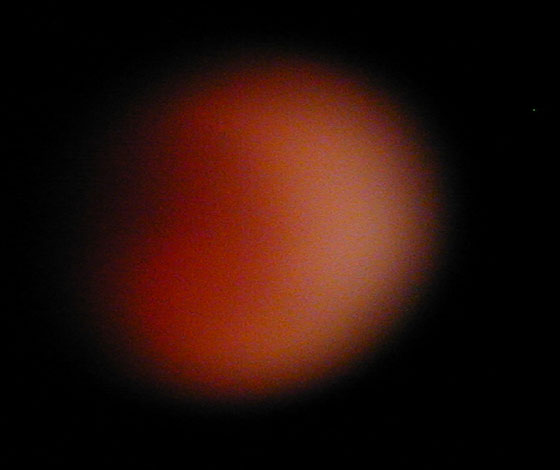Lunar eclipse - Total!
By Bill Meier; posted October 27, 2004
View Original: Click to zoom, then click to magnify (560 x 470) 23KB

|
This is about total. I didn't know it, but I did read on the web that is it really supposed to be red! A web page states "You might think that the Moon would be completely dark at totality. Not so. The Earth's atmosphere bends and refracts sunlight into the umbra. Even at maximum eclipse the moon is weakly illuminated. When this sunlight passes through Earth's atmosphere most of the blue-colored light is filtered out. The remaining light is a deep red or orange in color and is much dimmer than pure white sunlight. The exact appearance depends on how much dust and clouds are present in Earth's atmosphere. .... Since no major volcanic eruptions have taken place recently, the Moon will probably take on a vivid red or orange color during the long total phase. and... (from NASA) All around Earth's limb, the atmosphere glows red. What you're seeing is every sunrise and sunset on Earth--all at once. This ring of light shines into Earth's shadow, breaking the utter darkness you might expect to find there. Turn off the cockpit lights. There's a lovely red glow. That same red light plays across the moon when it's inside Earth's shadow. The exact color depends on what's floating around in Earth's atmosphere. Following a volcanic eruption, for instance, dust and ash can turn global sunsets vivid red. The moon would glow vivid red, too. This was taken through a 8x pair of binoculars with a 3x zoom on my digital camera. Not great, but you get the idea... |